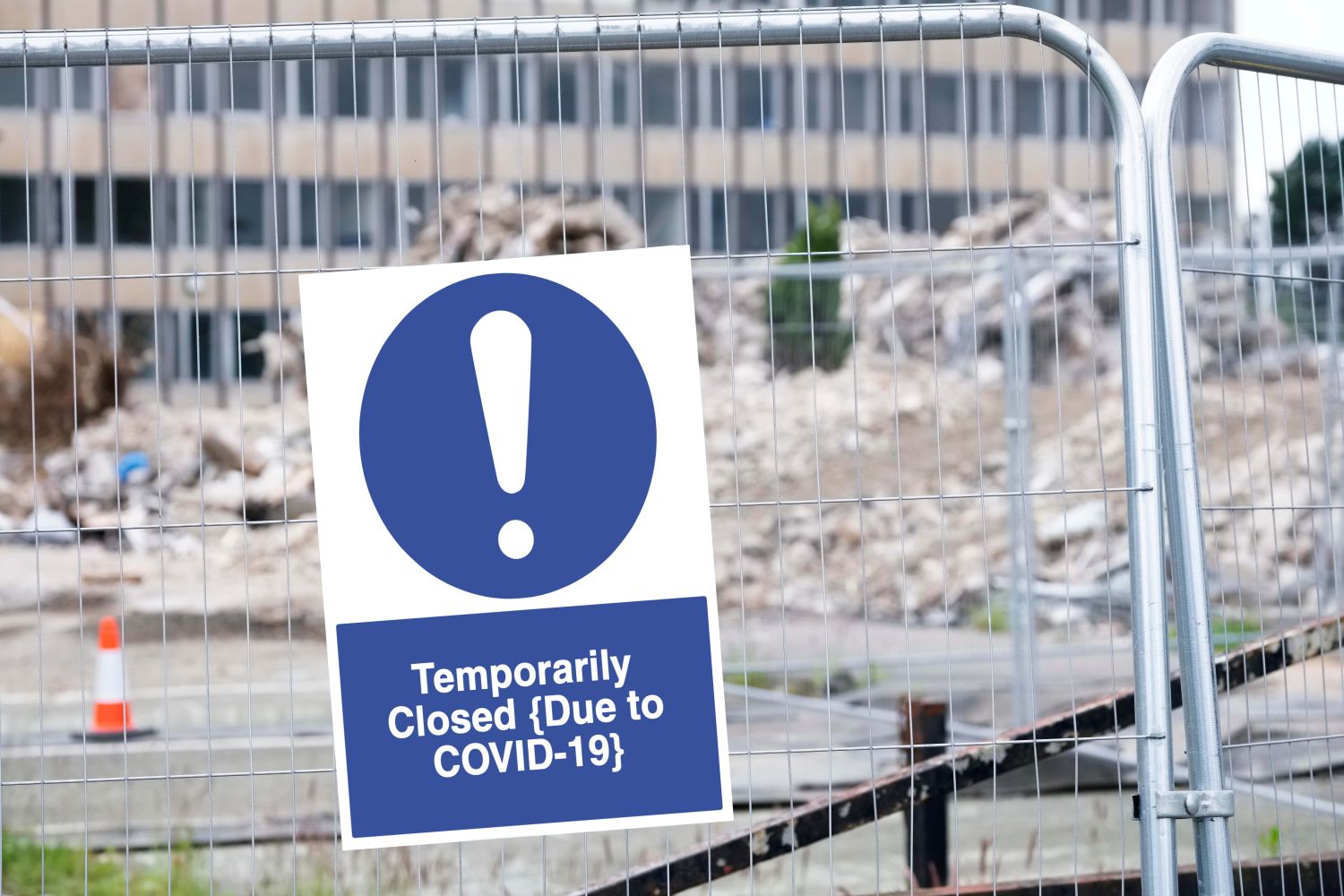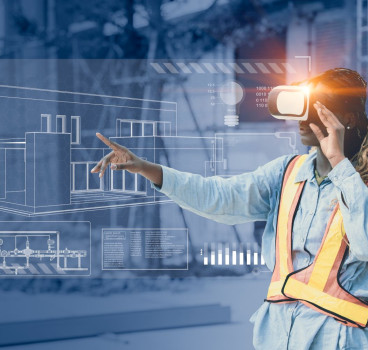The Anthropause build – or how global lockdowns forged a resilient new era for construction
The year 2020 etched itself into global memory as a period of unprecedented stillness – this was all about Covid. As the world collectively paused in the face of this pandemic, humanity experienced what some scientists termed the "Anthropause" - a significant, if temporary, reduction in human activity and its environmental impact. While the world's cities effectively ground to a halt, the construction industry found itself in an extraordinary and challenging new reality. With broken supply chains and disrupted labour, this period of global lockdown and subsequent supply shocks created a period of unexpected innovation, forced adaptation and a profound re-evaluation of priorities within the built environment, writes John Ridgeway.
The initial shock of the Anthropause hit construction hard. Projects halted abruptly, sites fell silent and a domino effect rippled through the entire ecosystem, from raw material extraction to final installation. Factories closed, borders tightened and the just-in-time delivery models that underpinned global construction logistics crumbled under the weight of uncertainty.
This was more than an annoying inconvenience - it was a systemic shock that exposed the vulnerabilities inherent in a globalised, lean industry. Companies, regardless of size, scrambled to understand immediate safety protocols, manage furloughed workforces and renegotiate contracts amidst a landscape of unprecedented unpredictability. The prevailing narrative, understandably, focused on the immediate crisis - the desperate hunt for PPE, the challenge of maintaining social distancing on active sites and the desperate attempts to secure dwindling supplies of everything from timber to steel.
However, beneath the surface of this immediate chaos, something more profound began to happen. The very constraints imposed by the Anthropause became catalysts for change. With traditional methods severely hampered, firms were forced to innovate out of necessity. One of the most immediate and widespread shifts was the accelerated adoption of digital technologies.
The birth of digital innovation
While Building Information Modelling (BIM) and digital collaboration platforms had been gaining traction for years, the lockdown made them indispensable. Teams, physically separated, relied entirely on virtual tools for coordination, design review and project management. Cloud-based software, drone technology for site monitoring and virtual reality walkthroughs, once considered cutting-edge luxuries, rapidly became essential for maintaining any semblance of continuity. This accelerated digital transformation, born of necessity, laid the groundwork for more efficient, interconnected project delivery systems that continue to evolve today.
The global supply shock, far from being a singular problem, created a cascading effect that forced a radical re-evaluation of procurement strategies. Dependence on single-source, international suppliers suddenly appeared dangerously precarious. This led to a resurgence of interest in local and regional supply chains.
Companies began to explore sourcing materials closer to home, not just as a matter of convenience, but as a strategic imperative for resilience. This shift, driven by pragmatic concerns about lead times and reliability, also had unexpected environmental benefits, reducing transportation emissions and supporting local economies. It forced a conversation about the true cost of globalised procurement, factoring in not just unit price, but geopolitical stability, environmental footprints and supply chain robustness. These moves towards localised sourcing, while challenging to implement at scale, have become a core element of many risk mitigation strategies post-Anthropause.
In addition to the immediate operational adjustments, the Anthropause fostered a renewed emphasis on prefabrication and modular construction. With labour mobility restricted and on-site crowding a health risk, the ability to manufacture components off-site in controlled factory environments gained significant traction. This allowed for greater consistency in production, reduced reliance on extensive on-site labour and minimised disruption to other construction activities.
Modular units, built to specification in a factory and then rapidly assembled on site, offered a compelling solution to maintaining progress while adhering to strict health protocols. This was not merely a temporary fix - it highlighted the inherent efficiencies and quality control benefits of off-site construction, pushing it further into the mainstream as a viable and desirable method for future projects, particularly those where speed, precision and sustainability are paramount.
The crisis also brought to the forefront the critical importance of waste reduction and resource efficiency. As supply chains tightened and raw material costs fluctuated wildly, every scrap of material became more valuable. This prompted a more rigorous approach to waste management, encouraging better planning, more precise cutting and innovative ways to repurpose or recycle on-site waste. The "take-make-dispose" linear model, already under scrutiny, faced an existential challenge. This heightened awareness of resource scarcity and waste generation has prompted many firms to embed circular economy principles more deeply into their project lifecycles, viewing waste as a design flaw rather than an inevitable byproduct.
The human element
Perhaps one of the most profound, yet less tangible, shifts was a re-evaluation of the human element within construction. The pandemic underscored the vulnerability of the workforce, prompting a greater emphasis on worker well-being, mental health support and flexible working arrangements. Companies began to invest more in digital tools for remote team management and communication, but also recognised the deep human need for connection and support amidst isolation and anxiety. Health and safety protocols expanded beyond physical hazards to include psychological safety, acknowledging the immense pressure and stress that workers, often far from home, were experiencing. This shift, born from crisis, has fostered a more empathetic and holistic approach to workforce management, recognising that a resilient construction industry is built on the foundation of healthy, supported individuals.

The initial environmental respite of the Anthropause, with its clear skies and reduced traffic, also served as a powerful, albeit temporary, demonstration of what a lower-carbon future might look like. This visual evidence, combined with the global focus on recovery and 'building back better', inadvertently accelerated the drive towards sustainable and green construction.
The pressure to build more efficiently
The pressure to build more efficiently, use fewer resources, and embrace cleaner technologies gained new momentum. Clients began to demand higher sustainability standards and developers recognised the long-term value in energy-efficient, low-carbon buildings. This wasn't merely a continuation of a trend - it was a societal recalibration that gave the green building movement a powerful injection of urgency and public acceptance.
Even the concept of building design itself began to subtly shift. The experience of lockdown, working from home, and the sudden awareness of indoor air quality and ventilation spurred new considerations for future commercial and residential spaces. There was an increased demand for adaptable spaces, better access to natural light and fresh air and materials that contributed to healthier indoor environments. The traditional office model, once a given, faced a profound re-evaluation, pushing architects and developers to conceptualise spaces that could better respond to future disruptions and evolving human needs for flexibility, well-being and connectivity.
The Anthropause was, in many ways, an involuntary stress test for the global construction industry. It exposed weaknesses in traditional models, but critically, it also revealed remarkable resilience, adaptability and an unexpected capacity for rapid innovation. The initial scramble for survival slowly morphed into a period of profound learning. Companies that embraced digital transformation, diversified their supply chains, explored off-site construction and prioritised both environmental and human well-being, found themselves not just weathering the storm, but emerging stronger and more agile.
The lessons learned from the Anthropause Build extend far beyond simply stockpiling materials or tightening supply contracts. They speak to a fundamental reshaping of priorities - from lean efficiency at any cost to resilient efficiency - from siloed operations to integrated digital workflows - from a singular focus on cost to a holistic understanding of value, encompassing environmental impact, social responsibility and human well-being. The quiet of the Anthropause allowed for a louder recognition of what truly matters in the built environment – not just the structures themselves, but the systems that create them, the resources they consume and most importantly, the people who build and inhabit them. The construction industry has taken these lessons to heart, slowly, but surely building a more adaptive, sustainable and human-centric future.
Additional Blogs

Are architects losing their influence in the digital era?
For decades, architects have been the central creative force in construction, shaping the buildings we see and the way projects are conceived, communicated and delivered. Their role has been...
Read moreWhy the word “Innovation” has lost its meaning in construction
“Innovation” has become one of the most overused terms in construction. It appears in the dozens of press releases we receive each day, conference talks and project reports, often without any real...
Read more

Retrofit fatigue and are we asking too much of old buildings?
As the world pushes toward net-zero emissions, the pressure to decarbonise our built environment is more intense than ever. Governments, developers and building owners are investing heavily in energy...
Read more